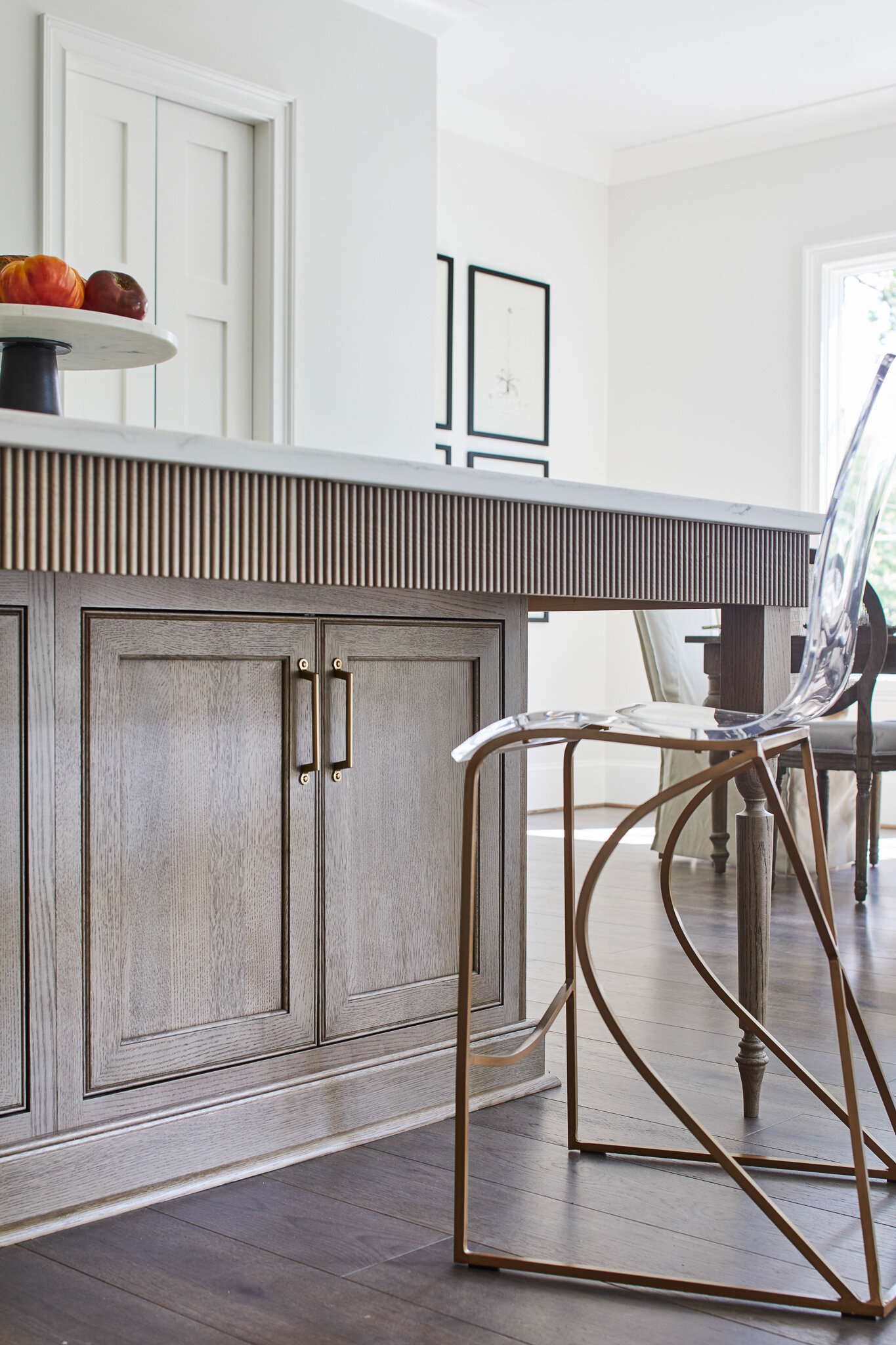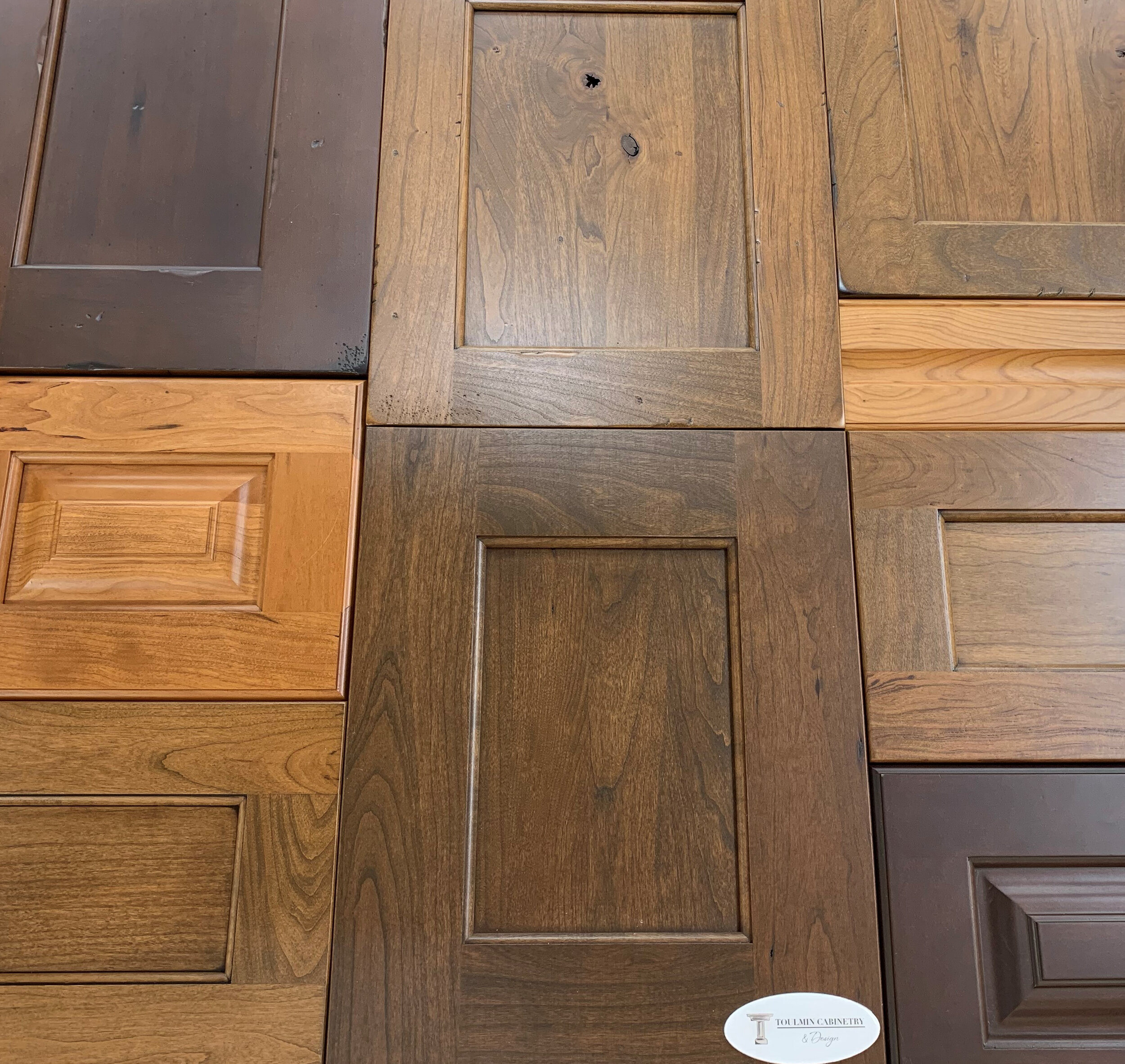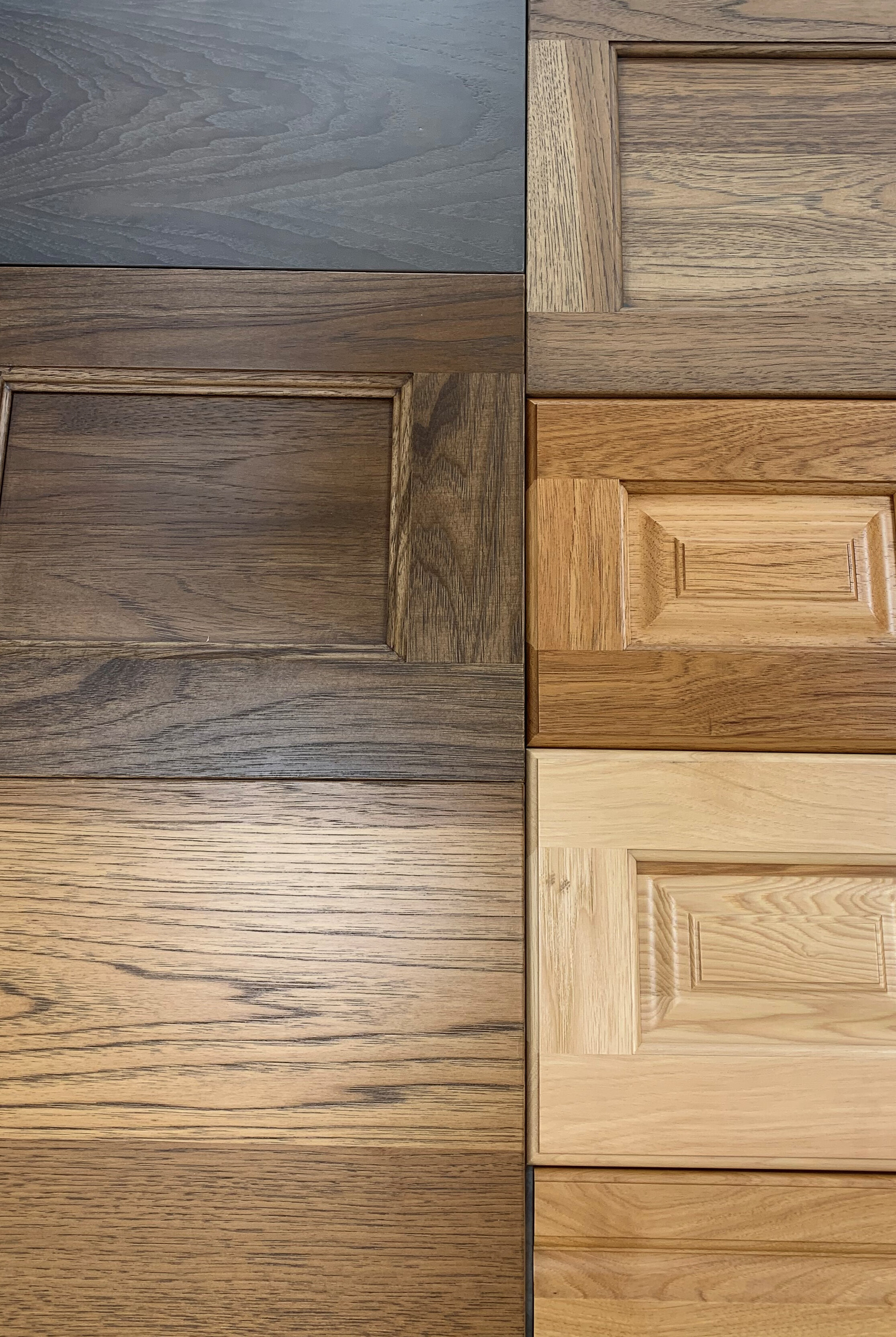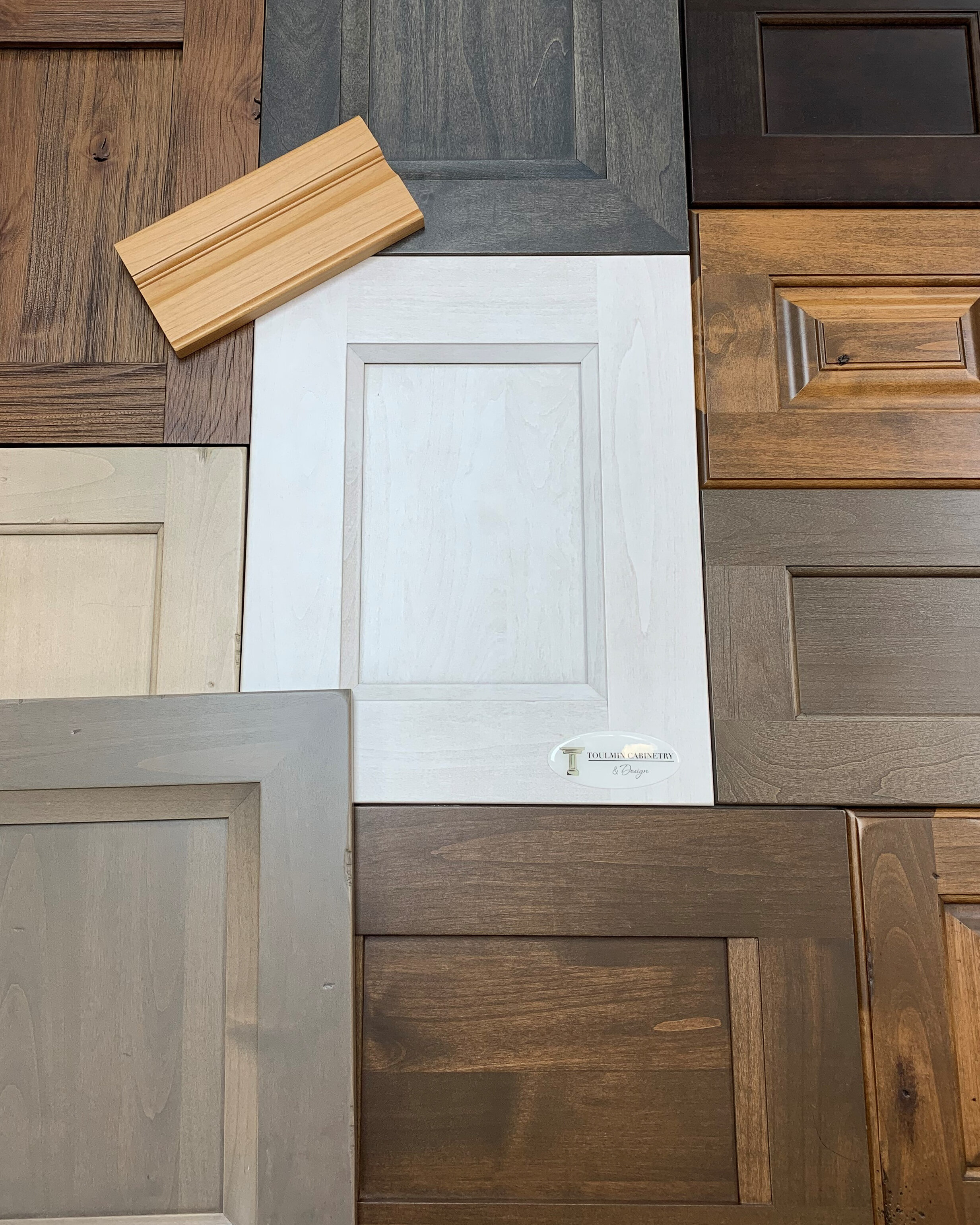What Wood Species Should I Choose for my Cabinets?
What wood species should you choose for your cabinets?
Choosing the Right Wood Species For Your Kitchen Cabinets
Whether it's the kitchen or the bathroom, your cabinetry is a central visual focal point for your design. Your cabinets can set the style of your home and, as such, are more than merely functional. Today, homeowners have several choices when it comes to the material from which their bathroom and kitchen cabinets are constructed.
Some homeowners choose the predictability and lower price point of engineered materials like thermofoil or laminate. However, suppose you're looking for a durable and beautifully natural look. In that case, nothing compares to the beauty, color variations, and grain patterns real wood offers.
One of the most distinctive characteristics of wood comes from the variety of species available. Different species take stain in different ways. If you prefer a strong, unique grain, consider a species like quartersawn oak for its distinctive pattern. If you're interested in a lighter grain, choosing a species like alder or poplar can fit the bill.
In this post, we will explore the unique characteristics of the six most common wood species used in cabinet construction. Ultimately, choosing the right wood species for your cabinetry comes down to your personal style and budget.
Natural Wood: The Character Lies In Its Imperfections
One of the biggest benefits of working with natural material is that no two trees are exactly alike. The unique beauty and elegance of hardwood are expressed in each cabinet's individual variation of grain and color. Some hardwoods are beautiful as they are. Others lend themselves perfectly to staining or painting, giving you a wide range of options.
In today's modern kitchen and bathrooms, full of stone, tile, stainless steel, and glass, the natural beauty, texture, warmth, and durability of hardwood offer a perfect contrast.
Style starts with the grain. Strong grain characteristics can help you to develop your style. Cabinets are often constructed to feature grain patterns unique to different wood species. For example, creating cabinet doors with a bookmarked burl pattern can create stunning motion! While other hardwoods like birch or alder offer a tight neutral grain, perfect for painting or glazing.
Some natural characteristics you might find in a hardwood that can give your cabinetry a unique look includes:
• Bird Pecks – small marks in the grain caused by pecking birds
• Burl – a twisting or swirling pattern in the grain that does not contain a knot
• Sound Knot – a solid knot across the face showing no indication of decay – common in many pine species
• Unsound Knot – circular area, formed by the base of a branch
• Wormholes – holes in the wood, in various sizes, a beautiful look in a rustic kitchen design
• Sugar Tracks – yellowish to dark brown streaks
• Mineral Streaks – color ranges from olive to blackish brown, follows the grain
• Gum Streaks – mineral streaks of color, specifically in cherry wood
• Heartwood – mature dark color wood extends from the sapwood to the pith
• Sapwood – lighter colored wood that grows from the bark to the heartwood
These natural imperfections are what give wood a unique look that designers absolutely love! Some are shared by all species, others like gum streaks, are exclusive to a specific species.
Learn the cost of a bathroom remodel.
Six Common Wood Species Used In Bathroom and Kitchen Cabinets
The beauty of natural wood lies in its uniqueness. Every species has its own unique characteristics like grain patterns, imperfections, and color that adds to its appeal. Here are some of the features of six popular species used in cabinet construction.
Cherry
Cherry cabinetry is defined by its rich red undertones. However, the color can range from pale yellow to deep brown. Cherry has a smooth tight-grained appearance with a medium density, a uniform texture, and random markings and grain variations. Cherry wood will darken with age and exposure to light, developing a rich patina. Thanks to its tight, even grain, cherry takes finishes like a stain or paint easily.
Cherry Stains
Maple
If you're looking for the perfect wood for painted cabinets, maple is the best choice! Maple is a hardwood with a straight, tight, close grain. Maple cabinetry is predominantly white with occasional red-brown overtones. Maple's grain pattern creates a uniform appearance.
Maple
Oak
Oak has one of the most distinguished grain patterns of all of the hardwoods. Its color can range from white to almost pink with red overtones. Oak can also show green, yellow, and black streaks due to minerals present in the wood. Oak is a very hard, open-grained wood, and depending on how it's cut, it can display a pronounced and quite unique grain pattern.
Oak is often plain sawn or flat sawn; this is the most common lumber you'll find. However, oak that is quarter sawn displays a fantastic straight grain pattern that lends itself to design. Quartersawn oak is defined as wood where the annular growth ring intersects the board's face at a 60 to 90-degree angle. Rift sawn oak is the least common and most expensive variation. Rift sawn oak has a very straight grain pattern on the face of the board. Rift sawn oak is the strongest possible board and offers the most consistent visual look of long, linear grain patterns.
Oak
Hickory
Hickory is a heavy, strong hardwood with well-pronounced graining. It offers a natural contrast, thanks to the differences between the heartwood and sapwood. It has drastic color variations that can range from blond or white to reddish-brown to dark brown. Like cherry, hickory may develop a rich patina, mellowing, and darkening with exposure to light.
Hickory
Alder
Alder is a medium density hardwood the exhibits a soft, straight grain. It's characterized by its light brown color and reddish undertones. However, the color can range from pale yellow to reddish-brown. The grain is straight and even-textured and exhibits no boundaries between the heartwood and the sapwood.
Alder
Poplar
Poplar is a fine-grained hardwood with a straight light grain pattern. It ranges in color from white or creamy yellow to brownish. It sometimes shows mineral streaks of various colors, sometimes referred to as "rainbow poplar." For years poplar was the paint-grade wood of choice and is a competitor of soft maple. While poplar is more labor-intensive to sand and finish than maple, it's attractive because it's more affordable.
Poplar
While these are the most popular wood species for cabinetry, there are many other kinds of wood and exotic veneers available like zebrawood, sustainable mahogany, and others. When choosing the perfect wood species for your cabinetry, it's best to explore your options and work with your designer or design-build contractor. Have them provide you with samples, or visit a showroom to see and touch the various wood species available.
If you live in the West Central Alabama area, and you're in need of cabinetry, why not give the design experts at Toulmin Kitchen & Bath a call at (205) 366-0807 or schedule an appointment. Let us show you all of the options available for your cabinetry. We can help you choose the perfect wood species to meet your functional and aesthetic needs. Call us today and arrange a free no-obligation consultation to discuss your project.







